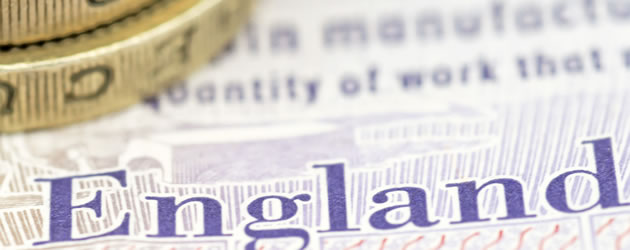
Although the UK’s budget deficit narrowed to 15.1 billion Pounds in March from 16.7 billion Pounds in the same period of 2012, Sterling fell to $1.5217 against the US Dollar this morning.
The 0.5 per cent decline pushed the Pound to a two-week low against its safe-haven American rival.
The Pound Sterling Exchange Rate was in the region of 1.5232 against the US Dollar as of 11:25 am GMT
The Pound’s losses were triggered by the expectation that today’s manufacturing orders report, compiled by the Confederation of British Industry, would reveal a 20th month of contraction.
Economists anticipated that the manufacturing orders index would edge up from minus 15 in March to minus 13 in April – a slight improvement but still well below the mark separating growth from contraction.
Prior to the report’s publication senior currency strategist Roberto Mialich stated: ‘The market expects a slight improvement in UK data today but we don’t think that will change the bigger picture of the country’s economic outlook. The Pound is likely to remain under pressure and we see any rebound as an opportunity to sell.’
However, the actual result was worse than economists had feared, with total orders careening from minus 15 to minus 25 – the lowest reading since October 2010.
The Confederation of British Industry’s director of economics said of the result: ‘This quarter was a mixed bag for manufacturers, with new orders disappointing because of a decline in domestic demand, but output did increase. Although weaker Sterling has eased concerns about international competitiveness, manufacturers highlight the potentially chilling effect of political and economic instability abroad on export orders, such as the Cyprus crisis.’
But it wasn’t all bad news as separate CBI data showed a gain of 5 in the quarterly business situation balance.
After the reports were published the Pound edged lower against the US Dollar, moving from $1.5263 to trade in the region of $1.5230.
Meanwhile, less-than-impressive news from the Eurozone caused the Euro to broadly soften. After manufacturing and services output in the currency bloc contracted for a 15th month the Euro tumbled against the majority of its currency rivals, notably sliding by 1.2 per cent against the Yen.
In response to the European news one industry expert asserted: ‘The overall picture is pretty bleak. The likelihood of the ECB cutting interest rates increased today. All in all, it’s negative for the Euro.
Industry experts will now be looking ahead to Thursday and the release of potentially volatile first quarter GDP data for the UK. It is expected that the UK will post slight growth, meaning that the nation has managed to avoid entering an unprecedented triple-dip recession.

Comments are closed.